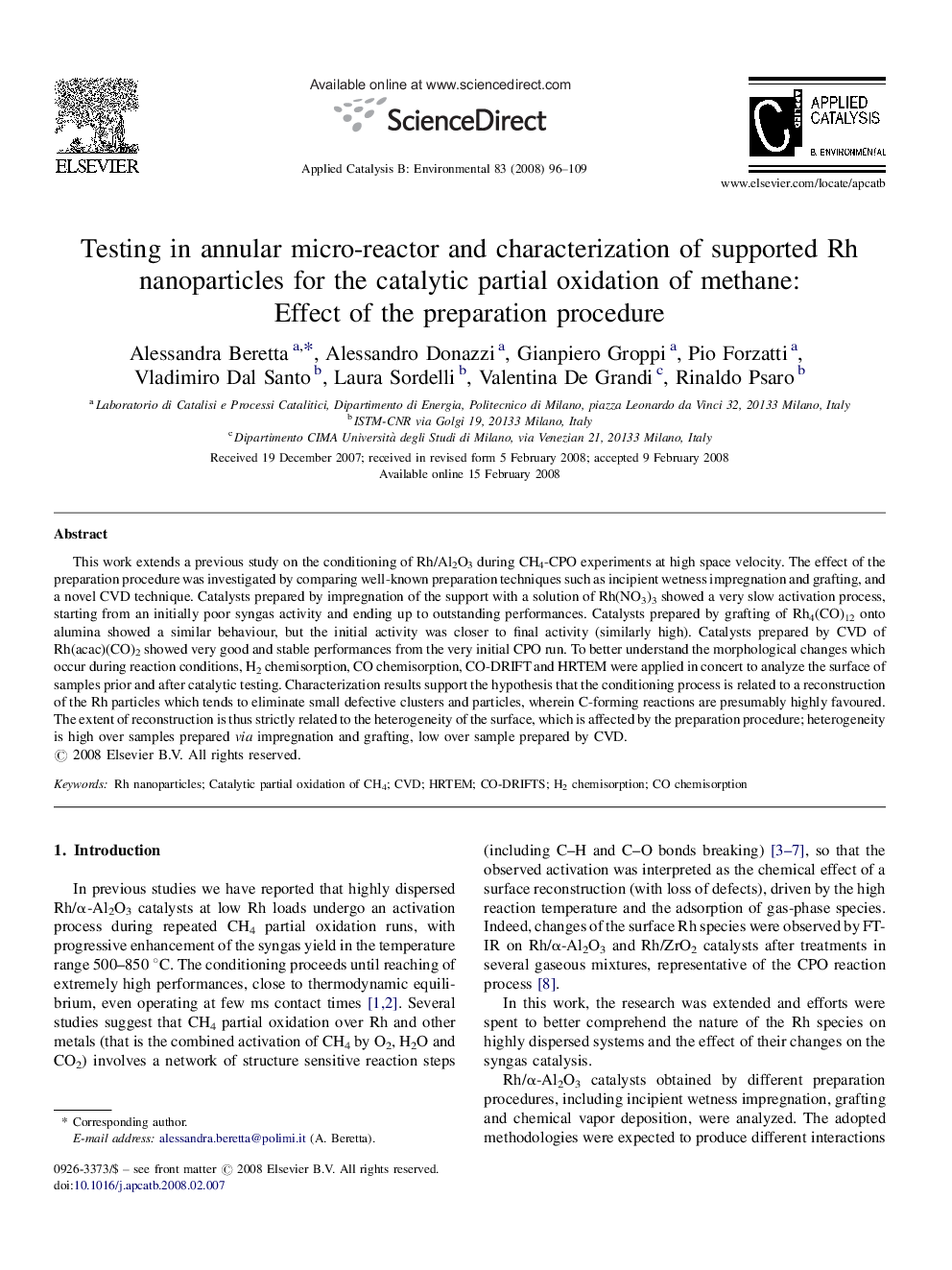| Article ID | Journal | Published Year | Pages | File Type |
|---|---|---|---|---|
| 48028 | Applied Catalysis B: Environmental | 2008 | 14 Pages |
This work extends a previous study on the conditioning of Rh/Al2O3 during CH4-CPO experiments at high space velocity. The effect of the preparation procedure was investigated by comparing well-known preparation techniques such as incipient wetness impregnation and grafting, and a novel CVD technique. Catalysts prepared by impregnation of the support with a solution of Rh(NO3)3 showed a very slow activation process, starting from an initially poor syngas activity and ending up to outstanding performances. Catalysts prepared by grafting of Rh4(CO)12 onto alumina showed a similar behaviour, but the initial activity was closer to final activity (similarly high). Catalysts prepared by CVD of Rh(acac)(CO)2 showed very good and stable performances from the very initial CPO run. To better understand the morphological changes which occur during reaction conditions, H2 chemisorption, CO chemisorption, CO-DRIFT and HRTEM were applied in concert to analyze the surface of samples prior and after catalytic testing. Characterization results support the hypothesis that the conditioning process is related to a reconstruction of the Rh particles which tends to eliminate small defective clusters and particles, wherein C-forming reactions are presumably highly favoured. The extent of reconstruction is thus strictly related to the heterogeneity of the surface, which is affected by the preparation procedure; heterogeneity is high over samples prepared via impregnation and grafting, low over sample prepared by CVD.
